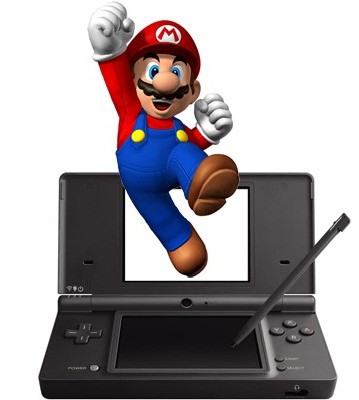 lSony Computer Entertainment America CEO Jack Tretton is making headlines for some discouraging remarks he made about the Nintendo 3DS last week. “Our view of the ‘Game Boy experience’ is that it’s a great babysitting tool, something young kids do on airplanes, but no self-respecting twenty-something is going to be sitting on an airplane with one of those,” Tretton tells Fortune, “He’s too old for that.”
lSony Computer Entertainment America CEO Jack Tretton is making headlines for some discouraging remarks he made about the Nintendo 3DS last week. “Our view of the ‘Game Boy experience’ is that it’s a great babysitting tool, something young kids do on airplanes, but no self-respecting twenty-something is going to be sitting on an airplane with one of those,” Tretton tells Fortune, “He’s too old for that.”
Obviously, the comment hasn’t gone over well with the self-respecting twenty-somethings of the gaming world who do in fact want to play with Nintendo Gameboy devices — on and off airplanes. The point Tretton is trying to make is that the forthcoming Sony NGP will appeal more to adults. Unfortunately what he’s failing to remember or most likely, choosing to ignore, is the fact that the NGP hasn’t received nearly the amount of attention the 3DS has.
But Tretton does make an interesting, albeit it poorly phrased, point. Nintendo’s marketing focuses on stressing the all-ages compatibility of the 3DS, the widespread appeal from serious gamers all the way to those who have never picked up a handheld device before. And Sony is going a different route: Tretton wants it to be clear that the NGP isn’t meant for everybody – it’s for grown up, committed gamers who focus on the technology and graphics behind their games, and laugh at the idea of playing Mario Kart.
What’s disappointing is that Sony may not need to point out its competitors’ supposed flaws to sell the NGP. It definitely doesn’t have the buzz the 3DS had, but it sounds and seems like a high-tech, extremely capable and quality gaming device that could challenge Nintendo’s own product. But the entire Fortune interview features Tretton desperately telling us how much better PlayStation is than other systems. The Wii doesn’t have a hard drive and the 360 doesn’t have Blu-ray – which, Tretton says will lead to their elimination from the long-term market. “If you’re really going to sustain technology for a decade, you have to be cutting edge when you launch a platform,” he says. All the while, casual gamers are taking over this arena: Mobile and social gaming have made converts out of the least likely suspects, and Wii and Kinect have become fixtures in your average living room. Sony might not want these types of customers, but it seems downright foolish to discount them entirely.


